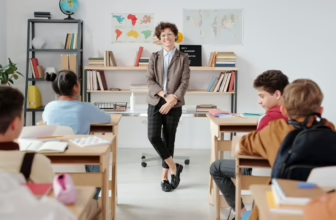What if the answer to a more inclusive world isn’t in politics or policy, but in sound?
Every day, people are misheard, overlooked, or misunderstood. It’s not due to lack of intelligence or capability, but because their speech doesn’t match society’s norms. From stroke survivors rebuilding language to adults with developmental stutters, communication can become a barrier to inclusion.
Speech-language pathology (SLP) is changing that. But it’s not doing it with theory alone. The science behind SLP is the real force accelerating inclusion, doing so quietly, methodically, and globally. With neuroscience, linguistics, and digital technology intersecting, SLP professionals aren’t just helping people speak. They’re reshaping who gets heard.
From Practice to Precision and the Evolution of SLP
Speech-language pathology has come a long way from intuitive therapy techniques. Today’s practitioners rely on neuroscience-backed tools, data-driven assessment models, and standardized outcome measures. Whether it’s analyzing dysarthria patterns post-stroke or building phonological awareness in multilingual adults, science sharpens the lens through which a therapist views a client.
Instead of relying solely on subjective judgment, therapists can now:
- Use acoustic analysis software to track voice changes in degenerative conditions
- Apply neuroimaging data to tailor recovery protocols for aphasia patients
- Implement evidence-based feedback loops to optimize articulation therapy
What does this mean? It means speech therapy is no longer generic. It's personalized. It’s measurable. And above all, it’s equitable.
The Role of Education: Building an Inclusive Workforce
True inclusivity starts with who gets trained to provide these services. For decades, access to SLP education was limited to brick-and-mortar institutions in developed areas. That gatekeeping is being dismantled.
Online education platforms have expanded access to specialized clinical knowledge, even for those in remote or underserved regions. In this context, speech language pathologist masters online programs play a critical role. They give learners the chance to engage in rigorous coursework and virtual practicum experiences without uprooting their lives. These programs are not only accredited but also aligned with current scientific frameworks, integrating cognitive neuroscience, multicultural assessment, and digital therapy delivery.
This matters when inclusion is the goal. Because if training pipelines only reach urban or high-income students, the workforce doesn’t reflect the diversity of the populations it serves. Online pathways level that playing field.
A Real-World Example: Technology Bridging the Silence
Researchers at the University of Toronto partnered with an AI company to address the lack of culturally sensitive speech therapy tools for adults in Canada’s Punjabi-speaking communities. Traditional speech pathology software had limited phonetic databases for South Asian languages, leading to ineffective diagnoses.
Through targeted acoustic modeling and language-specific articulation mapping, the project created a customized AI tool that helped clinicians deliver therapy in both Punjabi and English. The result? Clients improved much faster on articulation benchmarks compared to the baseline group using standard English-based software.
This wasn’t a feel-good project. It was science meeting lived experience. And it proved that language access, grounded in real phonetic science, empowers inclusion faster than any slogan.
Why Inclusivity Hinges on Measurement, Not Guesswork
Too often, inclusivity is approached as a moral imperative, not a measurable goal. Speech-language pathology refuses that vague path. Every treatment plan is built around measurable change, whether it's increasing a client's intelligibility by 20% or reducing pauses in fluency by half.
These metrics allow therapists to:
- Identify when interventions fail early, and pivot fast
- Ensure therapies don’t privilege certain dialects or accents
- Show insurers and institutions that change is not just possible, but documented
Inclusivity becomes less about idealism and more about accountability. That’s how trust is built with communities who’ve long been ignored or pathologized for how they speak.
SLP as an Inclusion Engine
Personalized SLP interventions are found to improve long-term communication outcomes in adults with acquired neurological conditions compared to generic therapy models. When culturally matched language models were introduced, the results were even better.
In a separate study, the American Speech-Language-Hearing Association (ASHA) reported that more and more SLP clients now receive services in a language other than English. This didn’t happen by accident, but followed the rollout of specialized training and tools backed by science.
Shifting From Empowerment to Autonomy
There’s a difference between helping someone speak and helping them be heard. Modern SLP understands that. Therapy now considers identity, social participation, and communicative intent, not just grammatical correctness. In practice, this might look like supporting a transgender client through voice therapy to align vocal tone with gender identity, or training a corporate employee with a stutter to lead presentations without being perceived as less competent.
This shift is driven by pragmatic science, with acoustic feedback systems, pragmatic language theory, and neuroplasticity research all contributing. And when people gain the tools to speak authentically and confidently, what they gain isn’t just inclusion. They gain autonomy.
Where Science Is Taking SLP
Speech-language pathology isn’t finished evolving. Emerging research areas point to where the field is heading next:
- Brain-computer interfaces that decode imagined speech for those with locked-in syndrome
- AI diagnostic tools trained on multilingual phonetic data
- Mobile therapy platforms using real-time speech analytics
As these innovations become standard, the potential for inclusion expands. Communication doesn’t have to be verbal. It doesn’t even have to be audible. Science is showing that any signal (facial, gestural, electronic) can become a voice. And that changes who gets to participate in society.
Speech-language pathology, when practiced with scientific rigor and cultural humility, is a frontline tool for inclusion. Not through charity, but through skill. Not through theory, but through evidence. It gives people not just the ability to speak, but the right to be understood, on their terms, in their language, and in their full identity.
And the more the science evolves, the wider that circle of understanding becomes.
Follow me down the rabbit hole!
I'm Alice and I live with a dizzying assortment of invisible disabilities, including ADHD and fibromyalgia. I write to raise awareness and end the stigma surrounding mental and chronic illnesses of all kinds.








